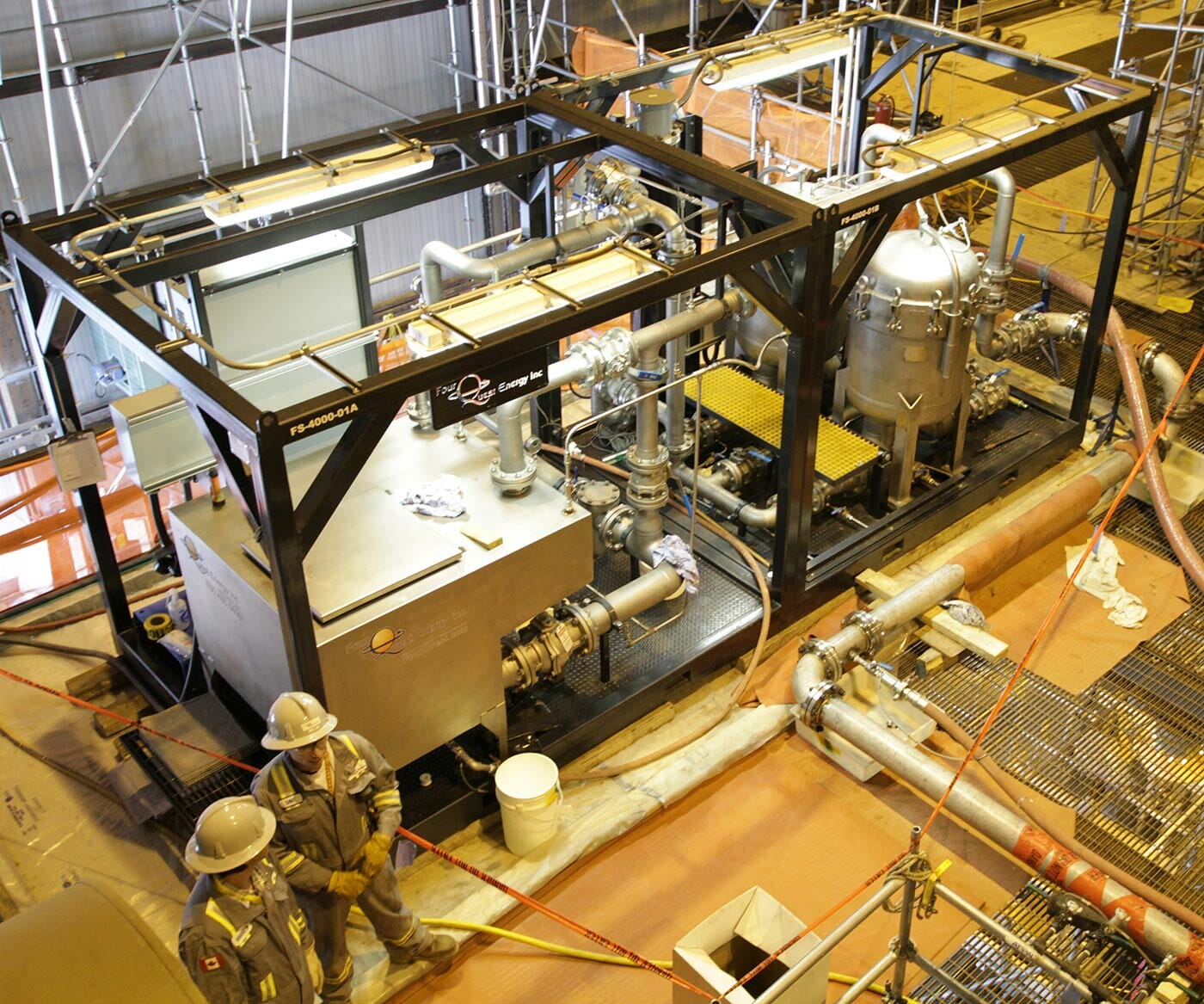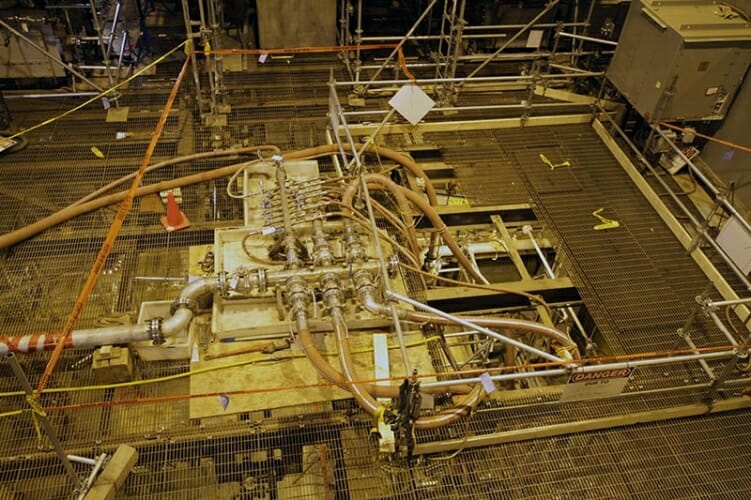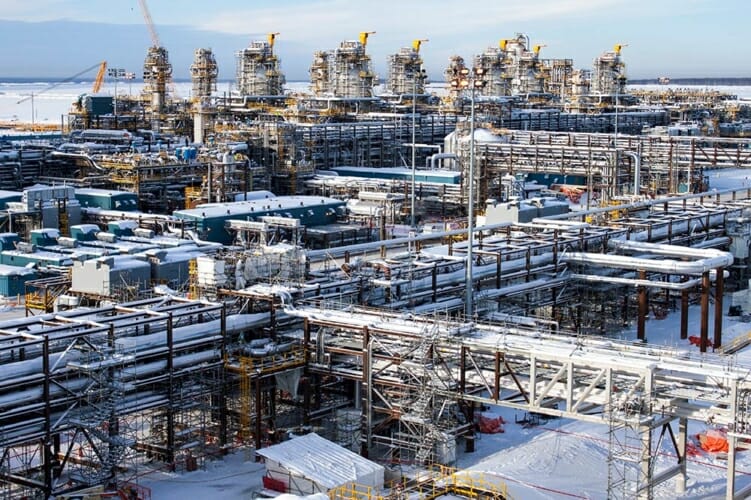Remove harmful contaminants and keep your new rotating and hydraulic equipment operating at peak performance; significantly reducing the potential for premature failure.
Contaminants such as water, rust, loose scale, weld slag, sand, dirt, and oils are removed from the system with a proper pre-operational cleaning, reducing the wear, scoring, and damage bearings, control valves, instrumentation, and critical operating systems are subjected to. Insoluble particles can become trapped in the bearings of rotating equipment and cause significant damage. The dynamic oil film thickness in rotating bearings can be less than a micron, so it is imperative to remove particulate from lubrication systems down to a microscopic level.
The cleaning process is conducted in three stages:
1
Removal of oils and varnishes
2
Velocity flushing to remove debris
3
Introduction & filtration of the lubrication
It is not unusual for the actual system oil to contain significant particulate, which must also be removed to prevent damage to the operating equipment. For this reason, any oil introduced into the system after flushing must be filtered to a stringent specification dictated by the equipment vendor.
When performing a cleaning job, FourQuest Energy designs the flushing paths in loops to maximize flow rates throughout the system. It is important that all parts of the system see turbulent flow regimes with a Reynolds number in excess of 4000.
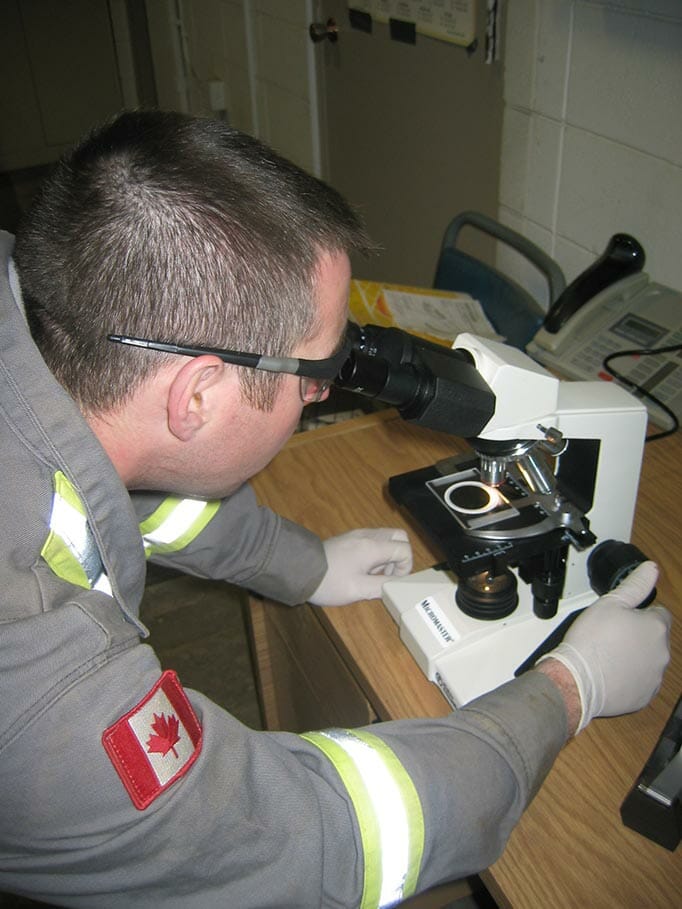
Custom Engineered Flushing Equipment
FourQuest Energy utilizes external flushing equipment, which has been designed by our engineers to perform circulation, heating, and filtration of oil systems.
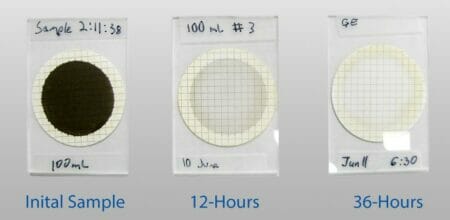
This external equipment can provide higher flow rates than the equipment onboard the installed oil system. It is also capable of controlled system heating, resulting in significantly reduced flushing times and cost for the equipment operator.
The FourQuest skid allows the flexibility and ease of installing a variety of sizes of filter media to target debris based on their dimensions. A reverse flow manifold—integral to the skid—allows the system to be flushed in either direction simply by manipulating four valves.
During the flushing of systems, critical components are usually bypassed to prevent debris from becoming trapped. For example, the bearing housings on lubrication systems are typically bypassed to avoid having particulate drop out of the bearings. It is also advantageous to bypass the oil reservoirs, as they allow any particulate picked up in the cleaning flow to be deposited at the bottom of the system. The oil reservoirs can be cleaned by hand using clean, lint-free rags.
FS-500
The FS-500 is a fully integrated skid-mounted flushing and filtration unit specifically designed for quick set up and operation. The unit can provide controlled flow rates from 20 to 500 litres per minute for flushing, chemical cleaning, or filtering operations. This system is ideal for applications where a high degree of cleanliness is required to meet operational or OEM specifications.
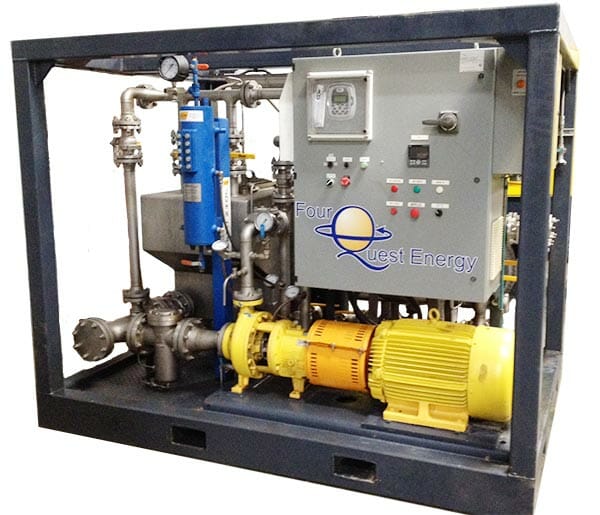
FS-2000
The FS-2000 is a fully integrated skid-mounted flushing and filtration unit specifically designed for quick set up and operation. The unit can provide controlled flow rates from 200 to 2000 litres per minute for flushing, chemical cleaning, or filtering operations. This system is ideal for applications where a high degree of cleanliness is required to meet operational or OEM specifications.
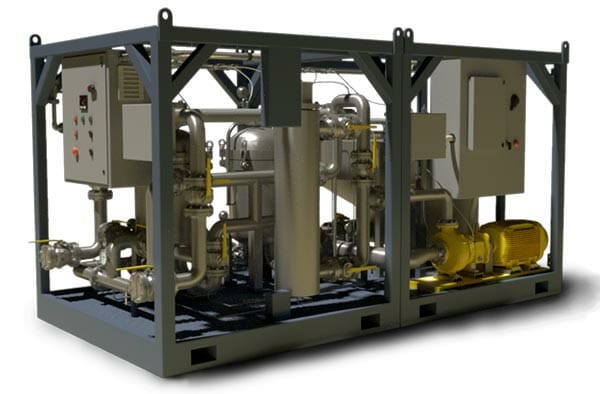
FS-4000
The FS-4000 is a fully integrated skid-mounted flushing and filtration unit specifically designed for quick set up and operation. The unit can provide controlled flow rates from 500 to 4000 litres per minute for flushing, chemical cleaning, or filtering operations. This system is ideal for applications where a high degree of cleanliness is required to meet operational or OEM specifications.
Related Case Studies
Applications for Lubrication and Hydraulic Oil Flushing Include
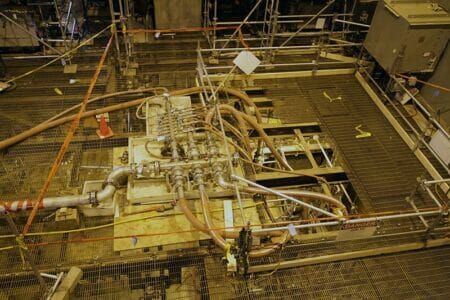
1. Cleaning of hydraulic control systems (e.g., systems controlling large isolation valves on coker drums and jacking systems for offshore equipment).
2. Rotating equipment lubrication oil system cleaning (e.g., steam turbines, large pumps, and gas turbine systems).
Flushing of hydraulic and lubrication oil systems is employed to ensure that new rotating and hydraulic equipment will start up and operate as designed, significantly reducing the potential for premature failure. Maintenance and downtime on equipment can be minimized by performing an effective system cleaning during commissioning and following maintenance and repair services. Any facility that has a low tolerance for equipment failure will find this service key to their preventative maintenance program.

